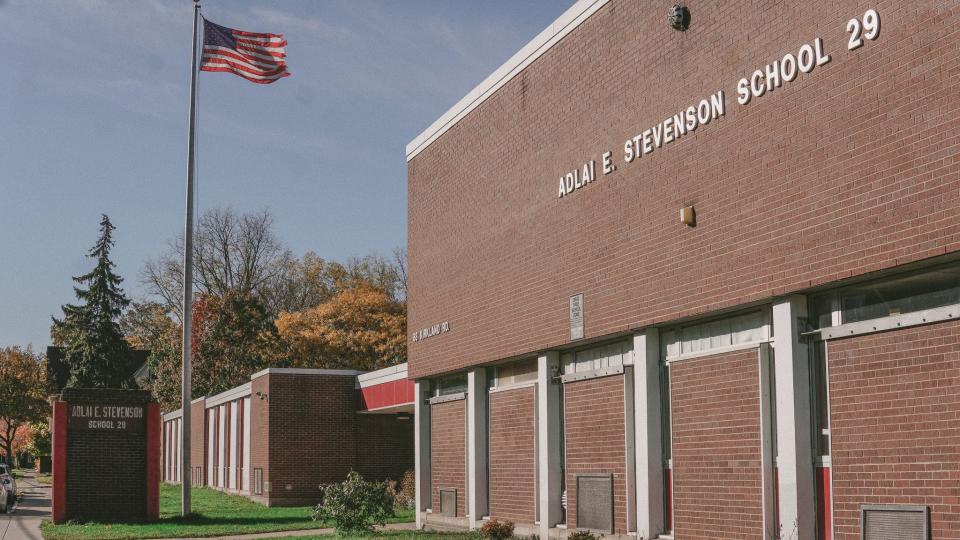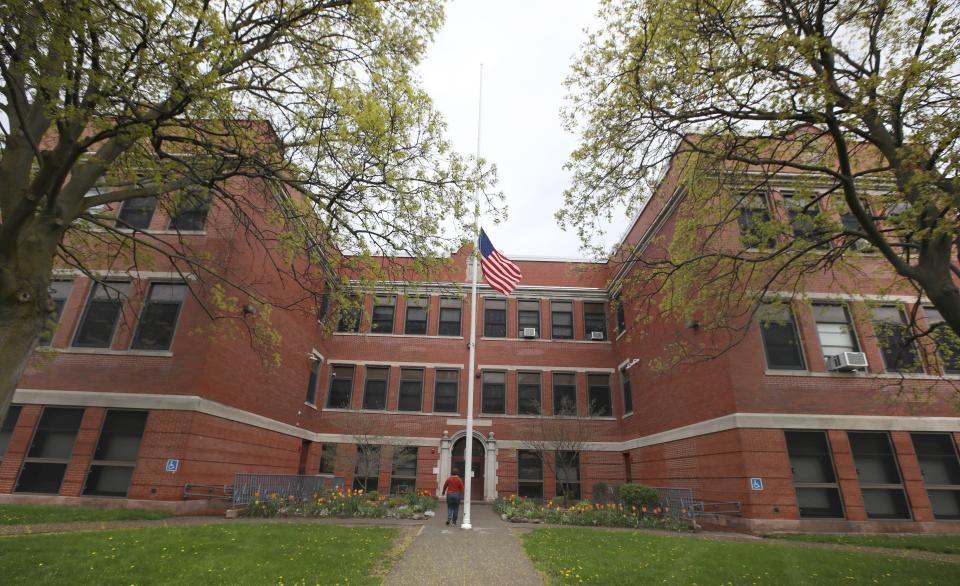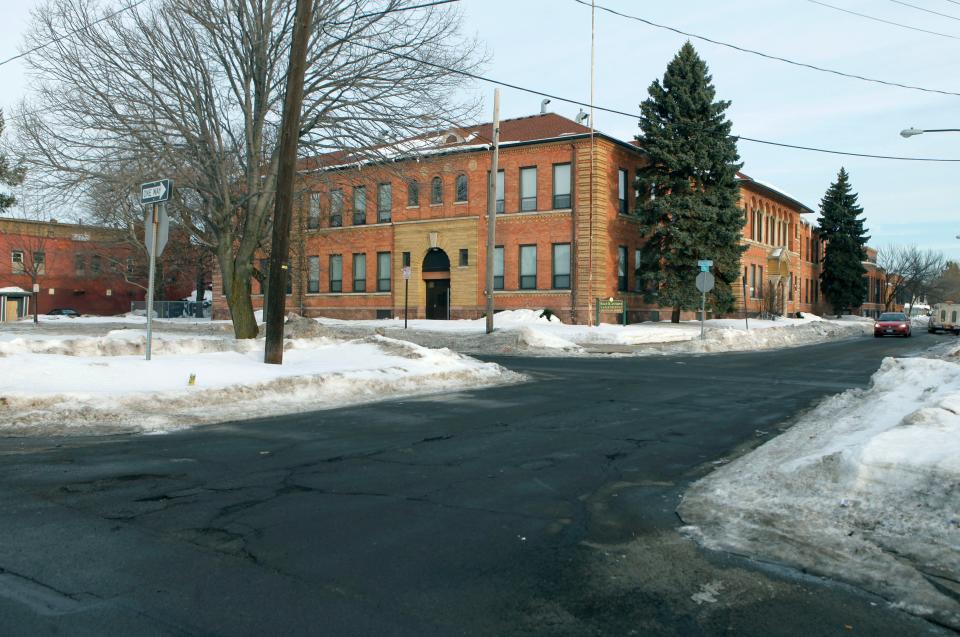Housing or charter schools? Competition will be intense for buildings that RCSD vacates
Once the dust settles next year on the proposed Rochester City School District reconfiguration plan, attention will turn to the city of Rochester as it decides what to do with three newly vacated school buildings.
The city charter dictates that school buildings become the property of the city once RCSD abandons them. The district's proposal would close 11 schools but only shutter three physical school buildings:
The former Henry Lomb School 20 building on Oakman Street off North Clinton Avenue, a building now used for the alternative education program NorthSTAR.
The Adlai Stevenson School 29 building on Kirkland Road in the 19th Ward.
The former Lincoln Park School 44 building on Chili Avenue, now serving as office space for the prekindergarten department.
As schools go, they are not prime real estate. RCSD ranks them as three of its six worst buildings from a physical perspective. School 29 in particular has long been viewed as outdated.

Interest in them, however, is expected to be intense.
City Council members have expressed an interest in converting old school buildings into affordable housing. Charter schools, meanwhile, have been making do with far inferior properties and would jump at the chance to purchase the buildings that RCSD abandons.
Charters clamoring for Rochester school space
RCSD has closed dozens of schools in the last 20 years, and yet the city is not awash in real estate.
There are several reasons the district has not relinquished more buildings:
It has kept some buildings, including the former John Marshall High School on Ridgeway Avenue, as swing space to be used when other buildings are being renovated.
Some closed school buildings have been renovated and turned into other schools. The buildings that once held Schools 1 and 14, for instance, are now renovated and home to Schools 15 and 58, respectively.
The former School 44 on Chili Avenue and School 57 on Costar Street are being used as district office space.
In the last 10 years the district has turned over just three buildings: the former School 22 on Zimbrich Street, the former School 25 on North Goodman Street and the former School 36 on St. Jacob Street.

The School 25 building was damaged by a series of water line breaks before it reverted to the city in 2020 and there is not yet a plan for it, city spokeswoman Barbara Pierce said.
The School 22 and 36 buildings were sold to Eugenio Maria de Hostos Charter School and Uncommon Schools, which operates Rochester Prep, for $1.5 million each in 2016.
"It's worked out very well," Eugenio Maria de Hostos board president Julio Vazquez said. "Obviously it’s an old building so we’ve been constantly investing money in it, but we knew that from the beginning."
Difficulty finding New York building availability
Charter school growth in Rochester has been overwhelming.
It is up 140% in the last decade, with about 7,800 students in charter schools this year versus a record low of 19,600 in RCSD.
Those schools do not receive building aid from New York state and have struggled to find suitable buildings, often using decommissioned parochial schools or moving to Greece. The Academy of Health Sciences Charter School recently completed the renovation of a bowling alley on Ridgeway Avenue.
"It just doesn’t make any sense that these are buildings paid for by tax dollars for education — they were built for educating our kids — and now almost 30% of our kids are in charter schools and they don’t have any access to these public buildings," Vazquez said.
Critics from the city and the charter school sector have accused RCSD of acting in bad faith by casting about for pretexts to keep buildings in its control. Former Superintendent Terry Dade confirmed their suspicions, making clear that his goal was to keep buildings out of charter schools' hands lest they grow even faster.
"Every building we turn over to charters is a decline in RCSD enrollment, period," he said in February 2020 while unveiling a plan that would have retained some closed schools as standalone pre-K centers. "I might as well put a charter school logo on the backs of those kiddos."
Housing promised
The most formidable competitor for charter schools now, however, might be the city itself.
In an open letter last fall, City Council President Miguel Meléndez and council member Mitch Gruber promised that the city would prioritize converting vacated school buildings into housing rather than sell them to charter schools operators.
"If RCSD right-sizes their footprint, it could mean more and better services at fully-occupied school buildings that were recently renovated through the School Modernization Program," they wrote. "The underutilized buildings can be returned to the City of Rochester, and Council will advocate at the State level to fund the transformation of these buildings into safe, high quality, affordable housing opportunities for Rochester residents."
There are at least three examples of former RCSD schools that are now residential:
the former Horace Mann School 13 on Hickory Street, now Gregory Park Condominiums;
the former Ellwanger Barry School 24 on Meigs Street, now high-end condominiums;
the former Susan B. Anthony School 27 on First Street, now the Susan B. Anthony Apartments.

Meléndez and Gruber did not respond to requests for comment. Meléndez also serves on the Eugenio Maria de Hostos board of trustees.
A city spokeswoman said only that Evans would seek the "best possible uses for the three buildings so they continue to serve the citizens and neighborhoods of Rochester."
Co-location not discussed
RCSD Superintendent Carmine Peluso said that, unlike Dade, he is not specifically trying to keep schools away from charter operators.
He also demurred on another idea that is common elsewhere but has never happened here: co-location, where RCSD uses part of a building and leases the rest to a charter school.
That would seem to make sense at the Charlotte campus, for instance. The 216,000 square foot facility was home to more than 1,300 students in the 1960s; under the current plan it would house a new middle school with fewer than half that many students.
University Preparatory Charter School for Young Men, a few miles south on Lake Avenue, has been fighting a pitched battle with some Irondequoit residents as it seeks to move into an empty office building on East Ridge Road.
School CEO Walter Larkin Jr., a former RCSD principal, has said he would much rather move his 525 students to either Charlotte or Marshall if the district would make space.
Justin Murphy is a veteran reporter at the Democrat and Chronicle and author of "Your Children Are Very Greatly in Danger: School Segregation in Rochester, New York." Follow him on Twitter at twitter.com/CitizenMurphy or contact him at jmurphy7@gannett.com.
This article originally appeared on Rochester Democrat and Chronicle: Vacated RCSD buildings could be housing, charter schools

